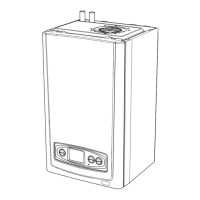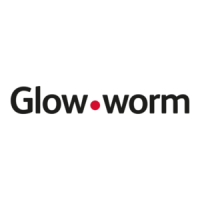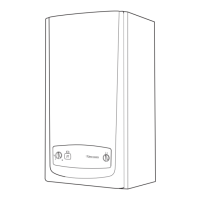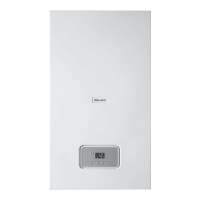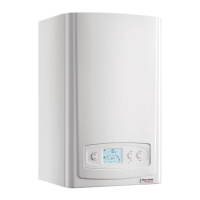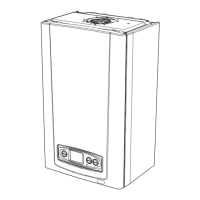0020107233_00 - 06/11 - Glow-worm
INSTALLATION
- 15 -
This boiler is designed to provide central heating from a fully
pumped open vented or sealed water system and domestic
hot water using a fully indirect vented or unvented cylinder.
An options board accessory is available to activate and link
the internal programmer with a Honeywell S or Y plan system.
SINGLE FEED INDIRECT CYLINDERS ARE NOT
SUITABLE.
The domestic hot water cylinder must be of the double feed
fully indirect coil type.
Draining taps must be provided at all low points of the system,
which will allow the entire system to be drained.
Draining taps shall be to the current issue of BS2879.
The pump should be tted on the ow pipe from the boiler and
have isolating valves each side.
A variable duty pump should be set to give a temperature
difference of no greater than 20
0
C between the ow and
return, with the thermostat set at “MAX”, which is about 80
0
C,
to give a ow rate as given in the table.
See chart for pressure loss of the boiler, diagram 5.1.
High resistance microbore systems may require a higher duty
pump.
If it is necessary to alter the ow rate, the system can be
tted with a lockable balancing valve in the main ow or
return pipes shown as valve “A” in diagram 5.3. The ow rate
through the boiler must not be allowed to fall below that given
in diagram 5.1.
A system bypass ‘B’ will be required tted at least 1.5 metres
away from the boiler, refer to the current issue of the central
heating system specications (CHeSS).
It is ESSENTIAL that prior to installing
the new boiler the system is thoroughly ushed.
For optimum performance after installation,
the boiler and its associated central heating system should
also be ushed.
Flushing should be carried out in accordance with BS7593:
2006 using a cleanser such as Sentinel X300 or X400,
Fernox Restorer or Salamander corrosion guard cleaner.
Ensure all cleanser is removed from the whole
system before adding an inhibitor.
For long-term corrosion protection, after ushing, an inhibitor
suitable for stainless steel exchangers should be used, refer
to the current issue of BS 5449 and BS 7593 on the use of
inhibitors in central heating systems. Examples are Sentinel
X100 Fernox Protector or Salamander corrosion guard
inhibitor.
General - All domestic hot water circuits, connections, ttings
must be in accordance with the relevant standards and water
supply regulations.
: Guidance G17 to G24 and recommendation R17 to
R24 of the Water Regulations Guide (for Scotland, the Water
Byelaws 2000, Scotland).
Document G Sanitation, hot water safety and water efciency,
section 3 of the building regulations, requires that the
installation of an unvented system should be notied to the
local authority Building Controls Department and that the work
must be carried out by a competent person approved at the
time by the Health and Safety Executive, as dened in the
approved document G3.
: The current edition of I.S.813 “Domestic Gas
Installations”.
Where a storage system will not have a vent to atmosphere
the installation must comply with the building regulations and
the Water Supply (water ttings) regulations 1999 and water
byelaws 2000, Scotland, see also the current issue of BS5546
and BS6700.
If tting to an existing system the local authority should be
informed.
General - All domestic hot water circuits, connections, ttings
must be in accordance with the relevant standards and water
supply regulations.
: Guidance G17 to G24 and recommendation R17 to
R24 of the Water Regulations Guide (for Scotland, the Water
Byelaws 2000, Scotland).
: The current edition of I.S.813 “Domestic Gas
Installations”.
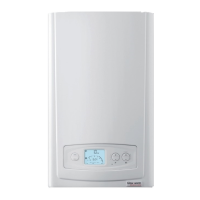
